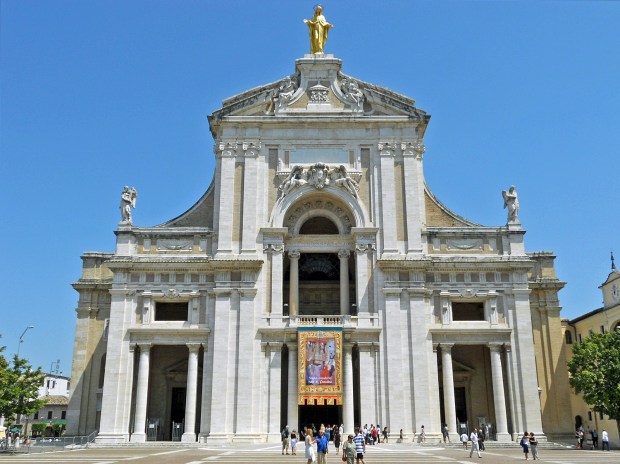Lenten Campaign 2025
This content is free of charge, as are all our articles.
Support us with a donation that is tax-deductible and enable us to continue to reach millions of readers.
Italy is the quintessential treasure trove of Catholic heritage. Within its borders are majestic papal basilicas – churches of extraordinary status granted directly by a pope. Four of these magnificent basilicas have special status and grace the streets of Rome, but a trip to Assisi reveals two more of these Catholic gems.
The Basilica of Santa Maria degli Angeli (Italian for St. Mary of the Angels) houses the Porziuncola, the tiny yet legendary chapel where St. Francis of Assisi is believed to have founded the Franciscan order. The chapel's humble stone exterior contrasts with the majestic basilica that surrounds it – a testament to the saint’s humble simplicity. And still, despite its austerity, the place holds immense spiritual significance, housing the Papal Altar, where only the Church’s highest officials can celebrate Mass.

A short walk uphill leads to the Basilica of San Francesco (the Basilica of St. Francis). This imposing structure houses the tomb of the beloved saint. The famed frescoes depicting his life adorn the walls, telling the story of this revered figure. They are the work of two of the greatest early Renaissance masters: Giotto and Cimabue. Like its sister basilica, it also has the Papal Altar, marking it a sacred space of immense importance.
The basilicas of Assisi offer a different pilgrimage experience than the great churches of Rome. They are places of quiet contemplation, obviously imbued with Franciscan values and spirituality. The focus is not on architectural prowess, but on the transformative power of humble faith, reflected in the simple structures that marked the birth of a globally influential religious order.

I can be said that Italy’s papal basilicas are at the pinnacle of Catholic architecture and devotion.
Whether it’s the major papal basilicas -- the soaring dome of St. Peter’s, the intricate mosaics of St. Mary Major, the ancient grandeur of St. John Lateran, the papal portraits of St. Paul Outside the Walls -- or the spiritual resonance of the basilicas of Assisi, each of these beloved structures holds its own unique allure for the faithful traveler.
A journey to these holy sites is not just a historical tour, but a pilgrimage to the heart of Catholicism itself.










